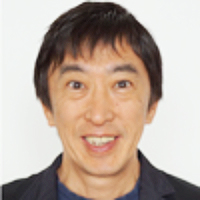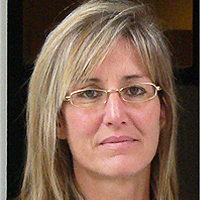Percutaneous treatment of severe retroperitoneal hematoma after percutaneous coronary intervention
Published on: 25th September, 2021
OCLC Number/Unique Identifier: 9272370670
We describe a patient who developed severe retroperitoneal and intraperitoneal bleeding complicating femoral arterial catheterization for Percutaneous coronary intervention. Balloon tamponade of the actively bleeding femoral artery was effective in sealing off the leakage.This management strategy for this problem emphasizing an anatomical based interventional approach if the patient does not stabilize with volume resuscitation.
Corneal stromal abscess and anterior uveitis in a pet goat
Published on: 21st September, 2021
OCLC Number/Unique Identifier: 9278269517
A 3-year-old non-lactating pet goat was referred to our clinic due to advanced ocular lesions and blindness of the left eye (Figure 1). According to the case history, two weeks ago, a grass awn penetrated and injured the eye. The awn was removed by the owner immediately. The following day, the goat had serous ocular discharge and photophobia and was referred to a private veterinarian. The veterinarian did not find any remaining piece of the awn and prescribed tetracaine eye drops to be administered twice a day for the next 4 days. The treatment was not successful and the eye’s condition deteriorated the following days.
Cannabinoids as a yield modifier in physical activit: A systematic review characters
Published on: 28th July, 2021
OCLC Number/Unique Identifier: 9272370672
Marijuana is considered illicit in much of the world, and is classified as a drug for recreational use, in recent decades the medicinal use of Cannabis sativa L. has grown and diversified, being considered the only therapeutic alternative in the control of serious and incurable diseases such as syndrome of Dravet. The world panorama has shown a more liberal position, since in several countries such as the United States of America, Holland, Australia, Italy, and more recently in Canada, the use of medications, or even the recreational use of this plant, have been regulated. In this context, the investigation of the modifying effects on physical activity of empirically used cannabinoids is fundamental nowadays, mainly due to the regulatory recognition of Cannabis sativa L. as a medicinal plant in a large part of the world. Therefore, the objective of this review was to verify the evidence related to the effect of cannabis on physical performance and to identify and highlight the challenges in the interpretation of information regarding the performance of practitioners of physical activity, as well as athletes, presenting new trends in this area of research to be addressed. To carry out the systematic review, a bibliographic survey of case reports was obtained through Pubmed, Science Direct and Google Academic databases. The following keywords were used to perform the research: cannabis, performance, pain, competition. The following filters were used as inclusion criteria a languages used english; species: humans; types of articles: original articles and reviews and period of publication of articles: 1981 to 2021.
Leiomyosarcoma in pregnancy: Incidental finding during routine caesarean section
Published on: 16th August, 2021
OCLC Number/Unique Identifier: 9272401197
Uterine leiomyosarcoma (LMS) is uncommon tumour arising from the female reproductive tract. Incidence of LMS in pregnancy is extremely rare, with only 10 cases reported thus far in medical literature.We present a case of myomectomy performed during elective caesarean section for breech presentation, due to its easy accessibility and well contracted uterus. Subsequent histology revealed LMS on final specimen. Patient subsequently underwent total abdominal hysterectomy, bilateral salpingo-oophorectomy. No chemotherapy was given as she opted for close clinical- radiological monitoring instead. This case report highlights the importance of discussion with patients regarding the risk of occult malignancy in a fibroid uterus. Appropriate management of uterine leiomyosarcoma in pregnancy remains unclear. Consideration of removing an enlarging leiomyoma during caesarean section might be ideal in view of its malignant potential, just like in this case; however, location of the tumour and risk of bleeding needs to be weighed. Ultimately, management of such cases needs proper discussion between obstetrician and the patient.
Strobilurins: New group of fungicides
Published on: 10th August, 2021
OCLC Number/Unique Identifier: 9204628235
Strobilurin is a group of natural products and their synthetic analogs have been widely used to control and prevent fungal diseases. Strobilurins were firstly isolated in 1977 from the mycelium of Strobilurus tenacellus, a saprobic Basidiomycete fungus causing wood-rotting on forest trees. This group of pesticides was designed to manage fungal pathogens classes such as Ascomycetes, Basidiomycetes, and Oomycetes. Also, Strobilurin commercialized included derivatives such as are azoxystrobin, kresoxim-methyl, picoxystrobin, fluoxastrobin, oryzastrobin, dimoxystrobin, pyraclostrobin and trifloxystrobin. This group is a part of the larger group of QoI inhibitors, which act to inhibit the respiratory chain at the level of Complex III. Strobilurins group control an unusually wide array of fungal diseases, included water molds, downy mildews, powdery mildews, leaf spotting and rusts. This group are used on cereals, field crops, fruits, tree nuts, vegetables, turfgrasses and ornamentals. Also, Strobilurins found to enhance the plant growth in some cases.
MALDI-MSI method for the detection of large biomolecules in plant leaf tissue
Published on: 6th August, 2021
OCLC Number/Unique Identifier: 9204611613
In this study we describe a method for the detection of biomolecules (in the polypeptide m/z range) directly from the surface of plant leaves by using Mass Spectrometry Imaging. The plant-pathogen interaction between Arabidopsis thaliana and the bacterium Xanthomonas campestris pv. campestris was analyzed by comparing infected and non-infected leaf discs submitted to mass spectrometry. The total surface area of ion distribution was calculated for both samples, revealing 23 ions, out of which 3 showed statistical significance. Although these ions were not identified, the results showed that this approach can be successfully applied for the detection of potential polypeptide biomarkers directly on leaf tissue, which is a major challenge in MALDI-Imaging studies.
Finite-time thermodynamics: Realizability domains of thermodynamic systems and P. Salamon’s problem of efficiency corresponding to maximum power output of the system
Published on: 16th October, 2018
The paper analyses performance boundaries of systems converting the heat energy into the mechanical or separation work. Authors approach this problem from the view-point of the finite-time thermodynamics. Using thermodynamic balance equations, authors provide the algorithm for calculation of realizability domain for such systems. The paper shows that the performance of these systems is the upper bounded function of the heat flux, assuming that heat and mass transfer coefficients are given. Authors present sufficient conditions under which the efficiency (specific heat flux per unit of the useful flux) of the system does not depend on kinetic coefficients when operating in the maximum performance mode. The paper shows how to use these conditions to optimally choose the separation order for multicomponent distillation.
Factors influencing referral delay of cancer patients to an oncology unit in the Southern Region of Saudi Arabia
Published on: 20th August, 2021
OCLC Number/Unique Identifier: 9194011239
Introduction: Cancer treatment and prognosis depend heavily on early detection. Survival in the early stages is excellent for almost all types of cancer. Unfortunately, in Saudi Arabia, a large number of cancer patients present with advanced disease, resulting in a poor prognosis. There are three levels of delay in the management of cancer patients. The first level is the time between the first cancer-related symptoms and the presentation to the health facility, the second level is from the presentation to the diagnosis, and the third level is between the diagnosis and the treatment. This study aims to determine if there is a delay, at what level and to study the factors causing such delays.Materials and methods: Two hundred cancer patients who presented to the Armed Forces Hospital Southern Region, Oncology Department, were interviewed from January 1st to June 30th, 2018. The interviews were conducted by trained physicians familiar with the questionnaire’s contents. The questionnaire consisted of four sections: a demographic section and three more sections to identify factors causing the delay at the three levels from the patients’ perspectives. All data were analyzed using the SPSS version 20.0.Results: The mean patient age was 63 years. A total of 112 patients were female and 88 were male. The most common cancer type was breast cancer (27.5%). Among the patients, 61% were illiterate and 25.5% had elementary school degrees, 86% expressed little or no general medical knowledge about cancer. More women than men paid attention to cancer symptoms (70% vs. 54%). 75% of the patients presented to the first health facility after 2 months from the first appearance of symptoms (level 1 delay). Only 2% of the patients presented within one week. 50% of the patients received a diagnosis after visiting two health facilities. All patients were diagnosed at hospitals. 40% of patients used alternative medicines, 70% of whom thought this was the cause of their delayed presentations. 67% had their diagnosis confirmed within one month (level 2 delay), and 66% started their definitive treatment within one month (level 3 delay). 75% of the patients blame themselves for the delay. Educational level (p = 0.03), knowledge about cancer (p < 0.01), and the use of complementary and alternative medicines (CAM) (p = 0.01) were significantly associated with delayed presentation of patients to the health facility. Conclusion: There is a delay in the presentation of cancer patients (level 1) in the southern part of Saudi Arabia. Educational level, knowledge of cancer symptoms, and use of complementary and alternative medicines are the main causes. There were no delays in diagnosis and start of treatment (level 2,3).
Addressing the disparities and the factors related to prolonged inpatient length of stay for solid tumor oncology patients during the COVID-19 pandemic: A narrative review
Published on: 17th September, 2021
OCLC Number/Unique Identifier: 9272370671
Solid tumor oncology treatments are primarily performed in the outpatient setting. However, hospitalizations are inevitable due to complications of cancer and treatment-related toxicities. With rising health care spending, the length of hospital stay (LOS) is increasingly considered a proxy for healthcare costs. There are several ongoing efforts to abbreviate the inpatient LOS and ensure a safe and timely discharge to the outpatient setting. In addition to the acute illness and the associated comorbidities, various factors affect the LOS: social determinants of health (SDOH), nutritional status in cancer patients, and end-of-life issues. Furthermore, it is unclear how the institutional policies on social distancing and visitation during the current coronavirus disease (COVID-19) pandemic may impact the LOS. The purpose of this article is to review various factors and barriers that lead to longer LOS for solid tumor patients during the COVID-19 pandemic, and identify the critical areas of quality improvement.
A case report of Multi System Atrophy (MSA) with cross over features of Progressive Supranuclear Palsy (PSP)
Published on: 13th September, 2021
OCLC Number/Unique Identifier: 9252228462
We describe an interesting case of Multi System Atrophy who had cross over features of progressive supranuclear palsy along with classical clinical findings which led to the diagnosis.




